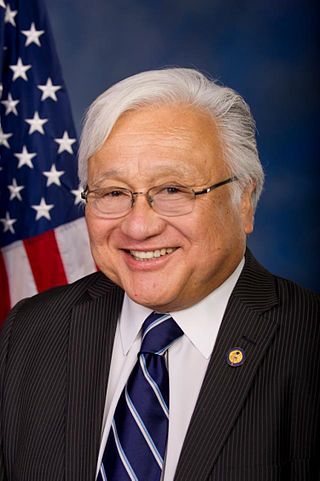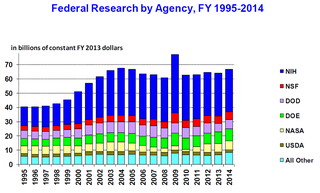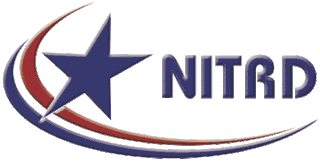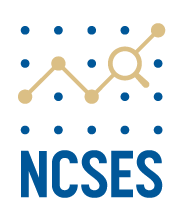
Michael Makoto Honda is an American politician. A member of the Democratic Party, he served in Congress from 2001 to 2017.
The Small Business Innovation Research program is a U.S. government funding program, coordinated by the Small Business Administration, intended to help certain small businesses conduct research and development (R&D). Funding takes the form of contracts or grants. The recipient projects must have the potential for commercialization and must meet specific U.S. government R&D needs.

The National Science and Technology Council (NSTC) is a council in the Executive Branch of the United States. It is designed to coordinate science and technology policy across the branches of federal government.

On December 19, 2006, the Pandemic and All-Hazards Preparedness Act (PAHPA), Public Law No. 109-417, was signed into law by President George W. Bush. First introduced in the House by Rep. Mike Rogers (R-MI) and Rep. Anna Eshoo (D-CA), PAHPA had broad implications for the United States Department of Health and Human Services's (HHS) preparedness and response activities. Among other things, the act amended the Public Health Service Act to establish within the department a new Assistant Secretary for Preparedness and Response (ASPR); provided new authorities for a number of programs, including the advanced development and acquisitions of medical countermeasures; and called for the establishment of a quadrennial National Health Security Strategy.

The science policy of the United States is the responsibility of many organizations throughout the federal government. Much of the large-scale policy is made through the legislative budget process of enacting the yearly federal budget, although there are other legislative issues that directly involve science, such as energy policy, climate change, and stem cell research. Further decisions are made by the various federal agencies which spend the funds allocated by Congress, either on in-house research or by granting funds to outside organizations and researchers.
The NASA Authorization Act of 2010 is a U.S. law authorizing NASA appropriations for fiscal years 2011, 2012, 2013 with the same top-line budget values as requested by US President Barack Obama. It resulted from the Augustine Commission's review of then-current crewed space flight plans.

The Networking and Information Technology Research and Development (NITRD) program consists of a group of U.S. federal agencies to research and develop information technology (IT) capabilities to empower Federal missions; support U.S. science, engineering, and technology leadership; and bolster U.S. economic competitiveness.

The Under Secretary of Commerce for Standards and Technology, or USC(ST), is a high-ranking official in the United States Department of Commerce and the principal advisor to the United States Secretary of Commerce on the technological development. The Under Secretary is dual hatted as the Director of the National Institute of Standards and Technology within the Commerce Department.

The Pandemic and All-Hazards Preparedness Reauthorization Act of 2013 is a law enacted by the 113th United States Congress. The Act amends the Public Health Service Act in order to extend, fund, and improve several programs designed to prepare the United States and health professionals in the event of a pandemic, epidemic, or biological, chemical, radiological, or nuclear accident or attack. The Act clarifies the authority of different American officials, makes it easier to temporarily reassign personnel to respond to emergency situations, and alters the process for testing and producing medical countermeasures. The Act is focused on improving preparedness for any public health emergency.

The Children’s Hospital GME Support Reauthorization Act of 2013 is a law that amends the Public Health Service Act to authorize payments to children's hospitals for operating training programs that provide graduate medical education. The law authorizes funding for approximately 55 eligible hospitals across 30 different states. The Children’s Hospital GME Support Reauthorization Act of 2013 became law during the 113th United States Congress.

The National Integrated Drought Information System Reauthorization Act of 2013 is a bill that would reauthorize the National Integrated Drought Information System, a program that examines the impact of droughts and tries to respond to them on a federal level. The bill would extend the program until 2018.

The Combating Autism Reauthorization Act of 2014 or Autism Collaboration, Accountability, Research, Education, and Support Act of 2014 or Autism CARES Act of 2014 is a United States federal law that amended the Public Health Service Act to reauthorize research, surveillance, and education activities related to autism spectrum disorders (autism) conducted by various agencies within the United States Department of Health and Human Services (HHS). The bill authorizes $1.3 billion in funding for fiscal years 2015–2019.

The Revitalize American Manufacturing and Innovation Act of 2013 is a bill that would establish the Network for Manufacturing Innovation Program (NMIP) within the National Institute of Standards and Technology (NIST). Under the program, NIST would award grants to establish a network of centers of innovation to improve the competitiveness of domestic manufacturers.

The American Innovation and Competitiveness Act (AICA) is a United States federal law enacted in 2017 by President Barack Obama that aims to invest in cybersecurity and cryptography research. The legislation was initially introduced in the Senate by Cory Gardner (R-CO) and Gary Peters (D-MI). The legislation serves as a reauthorization of the 2010 America COMPETES Act that expired in 2013.

The Alliance for Biosecurity is a consortium of companies that develop products to respond to national security threats, including bioterrorism pathogens and emerging infectious diseases. It is headquartered in Washington DC.

The Aviation Innovation, Reform, and Reauthorization (AIRR) Act was a bill introduced on February 3, 2016, in the 114th Congress (2015-2016) by Congressman Bill Shuster (R-PA) and Frank LoBiondo (R-NJ). Among other things, the bill would have privatized the American air traffic control (ATC) system. The bill would also have reauthorized the Federal Aviation Administration (FAA) through 2019.

The Weather Research and Forecasting Innovation Act of 2017 is a law providing for weather research and forecasting improvement, weather satellite and data innovation, and federal weather coordination.

The United States Innovation and Competition Act of 2021 (USICA) (S. 1260), formerly known as the Endless Frontier Act, was United States legislation sponsored by Senators Chuck Schumer (D-NY) and Todd Young (R-IN) authorizing $110 billion for basic and advanced technology research over a five-year period. Investment in basic and advanced research, commercialization, and education and training programs in artificial intelligence, semiconductors, quantum computing, advanced communications, biotechnology and advanced energy, amounts to $100 billion. Over $10 billion was authorized for appropriation to designate ten regional technology hubs and create a supply chain crisis-response program. The act is aimed at competing with China and to respond to US fears of an AI Cold War.

The National Center for Science and Engineering Statistics (NCSES) is one of the thirteen principal statistical agencies of the United States and is tasked with providing objective data on the status of the science and engineering enterprise in the U.S. and other countries. NCSES sponsors or co-sponsors data collection on 15 surveys and produces two key publications: Science and Engineering Indicators, and Women, Minorities, and Persons with Disabilities in Science and Engineering. Though policy-neutral, the data and reports produced by NCSES are used by policymakers when making policy decisions regarding STEM education and research funding in the U.S.

The CHIPS and Science Act is a U.S. federal statute enacted by the 117th United States Congress and signed into law by President Joe Biden on August 9, 2022. The act authorizes roughly $280 billion in new funding to boost domestic research and manufacturing of semiconductors in the United States, for which it appropriates $52.7 billion. The act includes $39 billion in subsidies for chip manufacturing on U.S. soil along with 25% investment tax credits for costs of manufacturing equipment, and $13 billion for semiconductor research and workforce training, with the dual aim of strengthening American supply chain resilience and countering China. It also invests $174 billion in the overall ecosystem of public sector research in science and technology, advancing human spaceflight, quantum computing, materials science, biotechnology, experimental physics, research security, social and ethical considerations, workforce development and diversity, equity, and inclusion efforts at NASA, NSF, DOE, EDA, and NIST.








